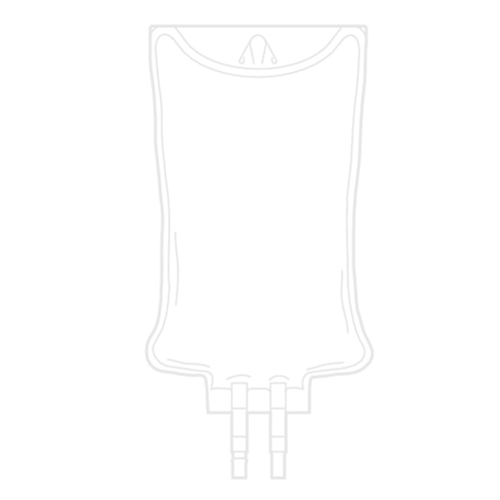

About Us
Manufacture
Products
Procurement
Working at Medpolymer
- Contact Us
- Ru
ANTIHYPOXIC DRUGS FOR INFUSIONS


Morbid conditions such as respiratory and cardiovascular failure, blood loss, myocardial ischaemia, cerebral or peripheral circulation disorders, severe infectious diseases, exogenous and endogenous intoxication associated with hypoxia. Therefore an intensive care physician should be armed with the reliable drug products that aim directly at metabolic processes in hypoxia and protect organism in case of oxygen deficiency in cells or in oxygen uptake disorders, that means antihypoxic drugs.
In clinical use domestic and foreign-made infusion solutions containing derivatives of the Krebs cycle substrates, such as fumarate, succinate and malate, are used for this purpose.
The two best known antihypoxic drugs for infusions are Mafusol and Reamberin.
Mafusol
Potassium Chloride + Magnesium Chloride + Sodium Chloride + Sodium Fumarate
Reamberin
Meglumine Sodium Succinate
Mafusol
Sodium chloride - 6.0 g
Potassium chloride - 0.3 g
Magnesium chloride - 0.12 g
Sodium fumarate - 14.0 g
Water for injection - up to 1 L
Reamberin
Sodium chloride 6.0 g
Potassium chloride 0.3 g
Magnesium chloride 0.12 g
Meglumine sodium succinate 15 g,
Sodium hydroxide 1.788 g
Water for injections up to 1 L
Mafusol
Rehydrating agent
Reamberin
Disintoxication agent
Mafusol
Mafusol is approved for use in adults and children aged one year or older for the treatment of hypovolemic and hypoxic states (blood loss, shock, trauma, intoxication), acute cerebrovascular events and ischaemic circulation disorders in adults. As a perfusion component to fill the circuit of the artificial blood-circulation apparatus in cardiac surgery in adults and children. Mafusol is effective in evolving hypoxia, above all — the most severe, critical — states accompanied by profound hypoxia. Mafusol infusions can reverse the symptoms of hepatic failure and prevent coma. There is positive use experience in elderly patients. When medically necessary Mafusol is titrated or administered as bolus injection by intravenous, intra-arterial and intra-intestinal administration.
Reamberin
Reamberin is used in adults and children aged one year or older as an antihypoxic and detoxifying agent in acute endogenous and exogenous intoxications of various origin. Under conditions of evolving hypoxia, oxygen deficiency, which limits all the substrates oxidation rate, reduces the value of succinate, which is the component of Reamberine and places it on a par with other oxidation substrates, so the use of succinate as an antihypoxant can be effective only in combination with the measures to improve the body oxygen supply. As prescribed by instructions Reamberin should be used with caution in the case of renal failure. Administered as an intravenous drip. No dedicated studies have been conducted in elderly patients. Start infusion of the drug at a slower rate of 30-40 drops (1- 2 ml) per minute, which significantly reduces its efficacy in replenishing circulating blood volume in cases of shock.
Mafusol
Hypersensitivity to the drug components. Traumatic brain injury accompanied by the increased intracranial pressure, as well as the states in which intravenous administration of high fluid volumes is contraindicated (including heart failure).
Reamberin
Individual intolerance; post-brain injury state, associated with cerebral oedema; severe renal dysfunction; pregnancy; lactation.
Use with caution in alkalosis.
Mafusol
Mafusol can be used in combination with colloid solutions (polyglucin, rheopolyglucin, neohaemodes, haemodez, gelatinol, etc.); the drug is also compatible with onated blood, erythromass, plasma and other blood products. Mafusol does not prevent the use of commonly used antishock agents, including: drugs for neuroleptanalgesics (fentanyl, droperidol), benzodiazines (diazepam etc.), as well as myorelaxants (suxamethonium etc.), proteolysis inhibitors (aprotinin) and adrenomimetic agents (dopamine, epinephrine).
Reamberin
is well matched with antibiotic drugs, water-soluble vitamins, glucose solution.
Mafusol
1630043, Published on February 28, 1994 Application No. 3763945/14, filing date June 1, 1984
Reamberin
Eurasian Patent No. 000879, published on June 26, 2000 Application No. 199801066 — Filing date December 2, 1998
Mafusol
Sodium fumarate is an antihypoxic drug, which adapts the living cell to oxygen deficiency providing ATP synthesis in the Krebs cycle even in case of severe hypoxia. Fumarate's treatment efficacy is explained by the features of oxidative phosphorylation under severe hypoxia, the possibility to reverse reactions in the dicarbonic portion of the Krebs cycle (succinate-fumarate-malate) with fumarate conversion to succinate and accumulation of the latter. The reduction of fumarate to succinate, on the one hand, is accompanied by an independent ATP synthesis and, on the other hand, it helps to maintain glycolytic ATP production by releasing oxidised NAD + for glycolysis. The generation of energy by conversion the dicarboxylic part of the Krebs cycle makes it possible for the cell to live under severe hypoxia.
Reamberin
Succinate-containing solutions contribute to the maintenance of energy metabolism, however, under acute oxygen deficiency, succinate oxidation is inhibited and its energy-producing function is significantly reduced. Succinate, when administered externally, has a moderate antihypoxic effect if used within a therapy course. The lack of a distinct protective effect can be accounted for by succinate's low permeability through biologic membranes. Under evolving hypoxia, oxygen deficiency, which limits all the substrates oxidation rate, reduces the succinate value and places it on a par with other oxidation substrates.
Mafusol
In metabolic acidosis it has an alkalinizing effect In hypovolemic states: -shock (haemorrhagic, burn, traumatic, operative); -In severe intoxication in adults (peritonitis, sepsis, intestinal obstruction, etc.) in adults administered at a dose of 2 – 3 L. In hypovolemic states Mafusol can be administered intravenously, by bolus and drip infusion, less frequently it is administered intra-arterially to quickly replenish the circulating blood volume and prevent water depletion in tissues.
It reduces blood viscosity and improves its rheology, increases diuresis, promotes activation of detoxification processes; reduces blood concentration of intermediate and end products of lipid peroxidation (antioxidant properties).
Reamberin
In metabolic acidosis it has an alkalinizing effect.
Reamberin cannot be used for rapid replacement of circulating blood volume in shock (haemorrhagic, burn, traumatic, operative) and severe intoxication accompanied by severe hypovolemia, as it can be titrated intravenously at a rate not exceeding 90 drops/minute (1—4.5 ml/minute) to 800 ml/day (this is a maximum dose, which is insufficient to compensate for severe hypovolemia).
It increases diuresis, promotes activation of detoxification processes; reduces blood concentration of intermediate and end products of lipid peroxidation (antioxidant properties).
Emergency and intensive care physicians have drug products at their disposal to effectively treat tissue hypoxia.